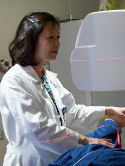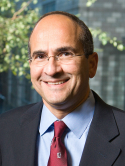| Abstract: |
BACKGROUND: Breast reconstruction with tissue expander (TE)/permanent implant (PI) followed by postmastectomy radiation (PMRT) is an increasingly popular treatment for breast cancer patients. The long-term rates of permanent implant removal or replacement (PIRR) and clinical outcomes in patients treated with a uniform reconstructive surgery and radiation regimen were evaluated. METHODS: Between 1996 and 2006, 1639 patients with stage II-III breast cancer received modified radical mastectomy (MRM) at Memorial Sloan-Kettering Cancer Center. A total of 751 received TE placement at the time of mastectomy. Of these, 151 patients went on to receive chemotherapy and exchange of the TE for a permanent implant, followed by PMRT. Clinical outcomes and PIRR-free rates were estimated by Kaplan-Meier methods. Cox regression model was used to examine patient, disease, and treatment characteristics associated with PIRR. RESULTS: Median follow-up was 86 months (range, 11-161 months). The 7-year PIRR-free rate was 71% (38 PIRRs in 35 patients). The 7-year rate of PI replacement was 17.1% (21), and removal was 13.3% (17). Reasons for PIRR included infection (15); implant extrusion, shift, leak, or rupture (4); patient request (1), or multifactorial (17). On univariate analysis, no factor was significantly associated with PIRR. Two patients experienced local recurrence in the chest wall, both after 7 years. The 7-year distant metastasis-free survival rate was 81% and overall survival 93%. CONCLUSIONS: Favorable 7-year PIRR rates and clinical outcomes were achieved in a sizable cohort of patients treated with homogeneous sequencing, radiation, and reconstructive surgery and lengthy follow-up. Factors predictive for high risk of PIRR were not identifiable in this population. Copyright © 2011 American Cancer Society. |













